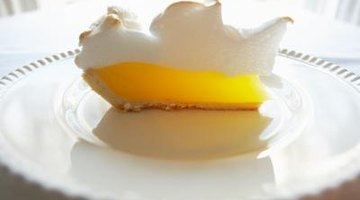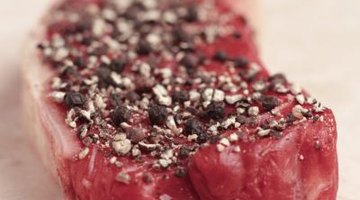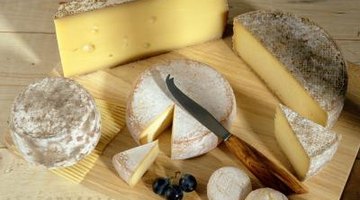Kitchens are full of chemicals that react with each other to form new compounds, as well as tastes, smells and textures. In fact, a kitchen is really one big chemistry set. Restaurant chefs and cooking experts around the world, including Heston Blumenthal of the United Kingdom’s The Fat Duck restaurant and the Food Network’s Alton Brown, are beginning to take this mentality of “chef as chemist” and apply it to how they prepare food to get the best and most consistent results. There are examples of chemical reactions in just about every kitchen in America.
Bread

The bread most Americans eat is leavened bread, or bread that has risen. It contains air pockets that make it fluffy or chewy. Things that make it rise, called leavening agents, include yeast, baking soda, baking powder and acids such as buttermilk. Chemical reactions occur between an acid and an alkaline--baking powder or baking soda--forming gas pockets, which make the dough rise. Yeast fungus, when combined with warm water, begins to ferment the natural sugars and carbohydrates found in flour and other bread ingredients. This fermentation process forms gas bubbles and makes the bread rise over a period of hours. Some breads, such as sourdough bread, put these ingredients together in a “starter” that ferments and is then added to the bread ingredients, which shortens the rising time.
- The bread most Americans eat is leavened bread, or bread that has risen.
- Some breads, such as sourdough bread, put these ingredients together in a “starter” that ferments and is then added to the bread ingredients, which shortens the rising time.
Meringue

A variety of desserts, soufflés and other baked goods are made with meringue, which is made of whipped egg whites and either sugar or cornflour. Fresh egg whites are placed in a bowl and briskly whisked by hand or with a beater. As the air begins to infiltrate the egg whites and the heat and force of the beating begin to take effect, the whites' amino acid chains begin to uncoil in a process called denaturation. This occurs when the chemical bonds that hold the chains together are broken and is aided by the acidic nature of egg whites. After they uncoil, they begin to mesh together, or coagulate, with pockets of air trapped among them. Adding sugar when the eggs begin to foam holds the air in place, so that the bubbles do not pop and deflate the meringue. Using a copper bowl or adding an acid such as lemon juice, cream of tartar or vinegar also helps with stabilising the air pockets.
- A variety of desserts, soufflés and other baked goods are made with meringue, which is made of whipped egg whites and either sugar or cornflour.
- Adding sugar when the eggs begin to foam holds the air in place, so that the bubbles do not pop and deflate the meringue.
Meat

Cooking meat, especially searing, produces the Maillard reaction, which occurs when sugars and the denatured proteins in the meat begin to break down and reconfigure. This reaction, discovered by the French scientist Louis-Camille Maillard in the early 20th century, occurs between 149 and 260 degrees Celsius and is commonly referred to as browning. This adds the meaty flavours and aromas we associate with meat.
Cheese

Cheese is made of milk or cream that is mixed with rennet, an enzyme found in a cow or sheep’s stomach, and a lactic acid bacteria culture. The rennet breaks down the protein in milk, called casein, and separates it into curd and a watery substance called whey. For most cheeses, the two are separated and the curd is salted and pressed into moulds. It sits in the moulds and ripens as the bacteria culture continues to break down the casein in the milk until cheese is formed. Different milks, such as goat, cow or sheep, and different bacterial cultures combine to form different varieties of cheese.
- Cheese is made of milk or cream that is mixed with rennet, an enzyme found in a cow or sheep’s stomach, and a lactic acid bacteria culture.
